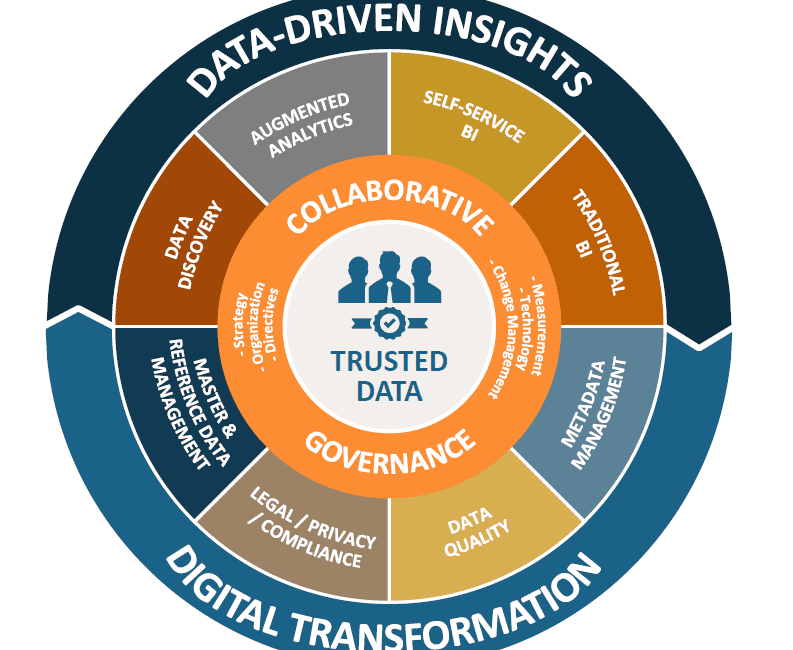In the advancing world of technology, the landscape of data governance has taken center stage. Organizations across industries are realizing the importance of managing their data effectively to make informed decisions and optimize their operations. However, with the push for modernization, legacy systems pose a unique challenge. Although these systems were once considered cutting-edge, they now stand as historical artifacts of technology. Because of the intricate interdependencies, segregated silos, and mass amounts of data that these systems hold, implementing governance practices is a complex journey requiring a strategic approach.
A Trip Down Memory Lane:
Legacy systems are often considered the backbone of an organization’s operations. They hold an abundance of disparate information that is vital to maintaining these operations. Although these systems have faithfully served their purpose for years, their architecture and underlying technologies is what makes them a double-edged sword. While they hold valuable data, they also present complex challenges due to their tightly intertwined components and lack of modern documentation. Legacy environments often hold the most critical and highest risk data for organizations.
The North Star: Data governance
The practice of ensuring data quality, availability, security, and compliance across an organization is more crucial than ever. It sets the guidelines for data usage, storage, and access, promoting transparency and accountability. However, implementing data governance in the context of legacy systems requires a balance between preserving existing functionality and driving modernization efforts.
Challenges of Data Governance in Legacy Systems:
One of the largest challenges arises from the complex web of interdependencies within legacy systems. With organizations implementing the “latest and greatest” system every few years, the process of modernization is reliant on finding the starting point of change – and not losing any data in the process. Tight coupling between components means that any changes can trigger unforeseen ripple effects, demanding careful planning and thorough testing.
Remember that overcoming interconnected legacy data systems is a gradual process. It requires careful planning, collaboration, and a realistic understanding of the challenges involved. Each organization’s situation is unique, so tailor your approach to your specific context and needs.
Strategies for Successful Data Governance in Legacy Systems:
So how can you start on your journey to successful data governance?
· Assessment and Documentation: Begin with a thorough assessment of the system ecosystem and its interdependencies. Mapping out these elements provides a clear picture of where data flows and how changes might impact other components. This understanding will serve as the foundation for your modernization efforts.
· Gradual Modernization: Consider a phased approach to modernization. Prioritize high-impact components for data governance implementation while maintaining core functionality. This approach minimizes disruption and risk.
· Data Quality Initiatives: Launch data quality improvement initiatives alongside data governance implementation. Address data inconsistencies, duplications, and inaccuracies to ensure reliable data for decision-making.
· Data Virtualization: Data virtualization tools can help provide a unified view across different legacy systems without physically moving or transforming the data. This can be useful in creating a more agile data access layer.
· Modernization and Replacement: Depending on the state of your systems, consider gradually modernizing individual components and migrating data to modern platforms.
· Continuous Monitoring: Even after modernization efforts are complete, continue to monitor the performance and interactions of the interconnected systems. Regular monitoring can help detect any issues early and allow for timely interventions.
· Expertise and Partnerships: Depending on your system’s complexity, you might consider seeking expertise from consultants or vendors who specialize in legacy system modernization.
Conclusion
The journey of implementing data governance in legacy systems is a challenging one. It requires a mix of strategy, collaboration, and adaptability. While organizations learn to balance innovation with tradition, they must recognize the value of preserving historical systems while embracing the need for effective data governance. The ultimate goal is to transform legacy systems into modern and governed data environments, ensuring their data remains a trusted asset for years to come.
During the entirety of the modernization process, ensuring data integrity within legacy systems is no small feat. Data inconsistencies throughout the years may complicate data governance efforts, requiring meticulous data cleansing and reconciliation.

